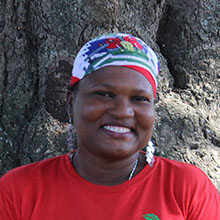Haiti's development continues to be hindered by political instability, increasing violence, and unprecedented levels of insecurity, which exacerbate fragility. Haiti remains the poorest country in Latin America and the Caribbean and among the poorest countries in the world. In 2023, Haiti had a GDP per capita of US$ 1,693 and a GINI index of 0.41 (consumption-based). Haiti's Human Development Index value for 2023 is 0.554 — which places the country in the medium human development category — ranking 166 out of 193 countries.
The economy contracted by 4.2 percent in 2024, a sixth consecutive year of decline. Tax revenue fell to 5.2 percent of GDP in 2024 due to economic downturn and challenges in collecting taxes in insecure areas. In 2025, GDP is forecast to contract by 2.2 percent as political uncertainty and gang violence depress private investment and high inflation dampens private consumption. Modest GDP growth is projected by 2026 as investment increases from a low baseline, assuming improvements on the political and security fronts. Trade policy changes may further depress textile exports, compounding existing security and business climate challenges. A resumption of GDP growth would gradually reverse poverty trends, with the share of Haitians living on less than US$2.15/day 2017 PPP projected to drop slightly from 37.6 percent in 2025 to 36.7 percent by 2027.
Haiti remains one of the most vulnerable countries worldwide to natural hazards, mainly hurricanes, floods, and earthquakes. More than 96 percent of the population is exposed to these types of shocks. On August 14, 2021, an earthquake measuring magnitude 7.2 on the Richter scale, struck the southern region of Haiti, an area where approximately 1.6 million people live. The direct human toll of the earthquake resulted in 2,246 deaths, 12,763 injured, and 329 missing in the three departments of the Southern Peninsula. In terms of infrastructure, 54,000 houses were destroyed while 83,770 other buildings were damaged, including schools, health facilities, and public buildings.
Despite some signs of progress, Haiti continues to face critical security challenges. At least 5600 people were killed in 2024, according to the United Nations High Commissioner for Human Rights, while more than a million people are now internally displaced in Haiti, according to the International Organization for Migration (IOM). As the country’s security crisis continues, 5.4 million Haitians struggle daily to find enough to eat.
On the human development front, Haiti currently has a total of 88,782 suspected cases of cholera as of March 09th, 2025. Improvements in human capital have stalled and, in some cases, deteriorated. Infant and maternal mortality remain at high levels, and coverage of prevention measures is stagnating or declining, especially for the poorest households.
According to the 2020 Human Capital Index, a child born today in Haiti will grow up to be only 45 percent as productive as they could be if he or she had enjoyed full access to quality education and healthcare. Over one-fifth of children are at risk of cognitive and physical limitations, and only 78 percent of 15-year-olds will survive to age 60.
Last Updated: Apr 28, 2025


